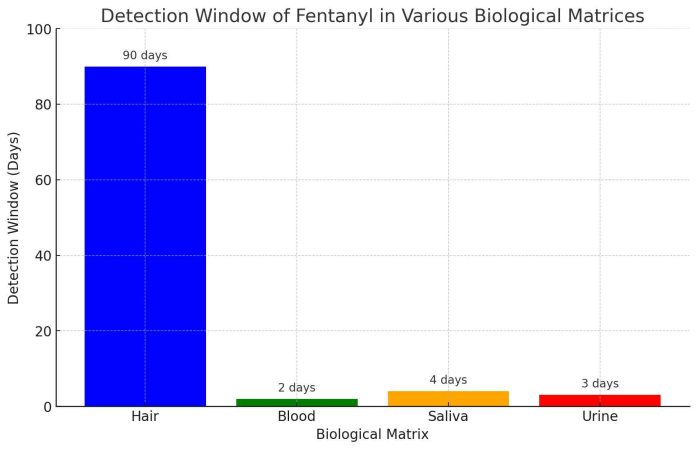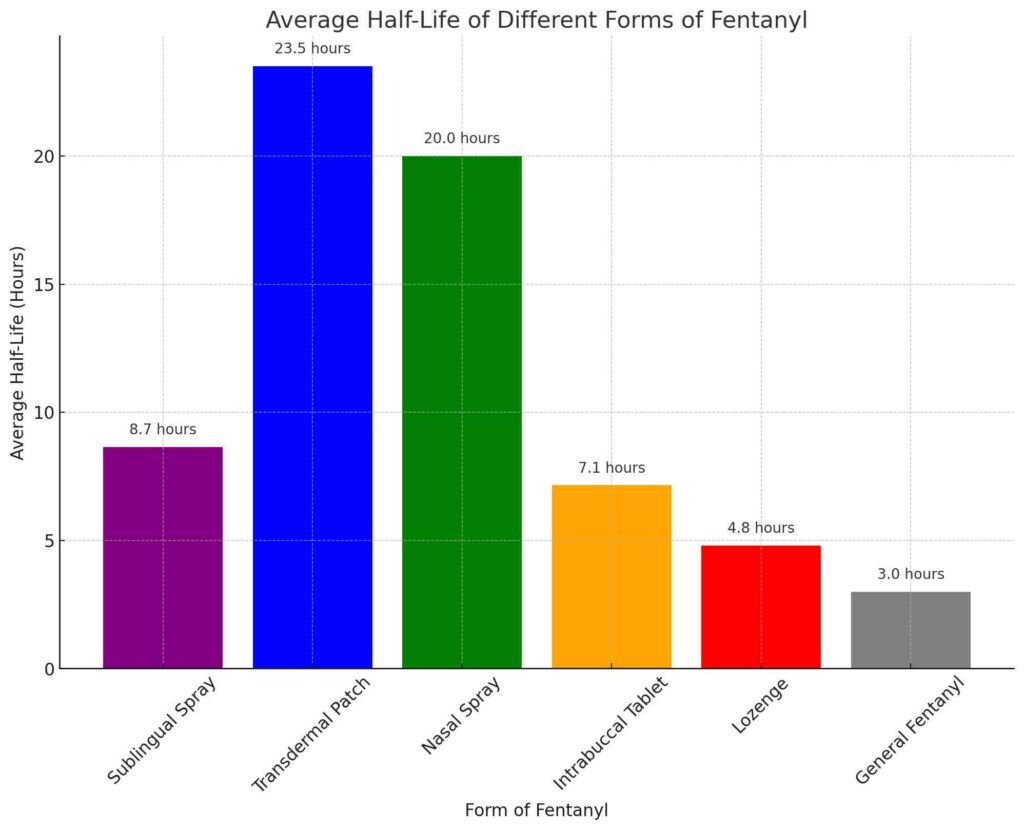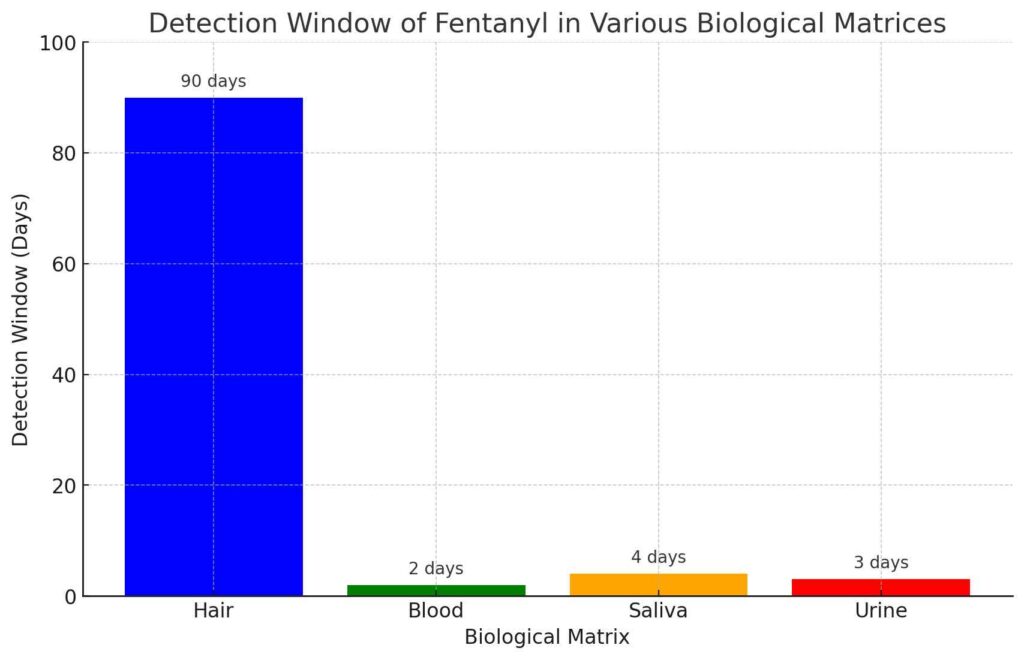How long does fentanyl stay in your system depends on various factors, including the dosage, frequency of use, and individual metabolism. Fentanyl, a synthetic opioid up to 100 times more potent than morphine, is prescribed for severe pain management but is also a major contributor to the opioid crisis due to its high potential for misuse. Understanding fentanyl’s metabolism and detection windows is crucial for drug testing and monitoring treatment plans.
Fentanyl Half-Life
The half-life of fentanyl, the time taken for half of the drug to be eliminated from the body, ranges from 3 to 12 hours. This means it could take up to 32 hours (or roughly five half-lives) for a fentanyl lozenge to be eliminated from the body. The half-life varies based on the dosage form:
| Form | Half-Life |
|---|---|
| Lozenge | 3.2 to 6.4 hours |
| Intrabuccal tablet | 2.6 to 11.7 hours |
| Sublingual tablet | 5 to 13.5 hours |
| Sublingual spray | 5.3 to 12 hours |
| Nasal spray | 15 to 25 hours |
| Transdermal patch | 20 to 27 hours |
How Long Does Fentanyl Stay in Urine?
Urine tests are one of the most commonly used methods for detecting fentanyl. Fentanyl and its primary metabolite, norfentanyl, can typically be detected in urine for 1 to 3 days after the last dose. Chronic or high-dose users may have longer detection windows. According to research published in the Journal of Analytical Toxicology, norfentanyl’s longer presence in the system makes urine testing highly effective for monitoring fentanyl use.
How Long Does Fentanyl Stay in Blood?
Blood tests provide a shorter detection window for fentanyl, typically identifying the drug for up to 12 hours after the last use. This method is used in emergency settings or legal investigations to confirm recent fentanyl exposure. According to the National Library of Medicine, blood tests are accurate for identifying active impairment due to fentanyl.
How Long Does Fentanyl Stay in Saliva?
Saliva tests detect fentanyl within minutes of use and can provide a detection window of up to 1 to 2 days. This non-invasive testing method is increasingly popular for workplace or roadside screenings. The sensitivity of saliva tests can be influenced by hydration levels and oral hygiene, as noted by the National Institute on Drug Abuse (NIDA).
How Long Does Fentanyl Stay in Hair?
Hair follicle testing offers the longest detection window for fentanyl use. Traces of fentanyl can remain in hair samples for up to 90 days after the last dose. This method is useful for assessing long-term or chronic use patterns. Research from the Journal of Forensic Sciences highlights that the length of the hair sample impacts how far back drug use can be detected, making hair testing a reliable method for determining historical fentanyl exposure.
Factors Influencing Fentanyl Detection Times
Several factors can affect how long fentanyl remains detectable in your system:
- Dosage and Frequency: Higher doses and frequent use lead to accumulation in the body, prolonging detection windows.
- Route of Administration: Intravenous fentanyl is metabolized faster than transdermal or oral forms.
- Metabolism: Faster metabolic rates clear fentanyl more quickly, while slower rates extend detection times.
- Liver and Kidney Health: Impaired function slows the breakdown and excretion of fentanyl.
Help for Fentanyl Addiction
Struggling with fentanyl dependency can feel overwhelming, but professional treatment is available. Still Detox in Boca Raton, Florida, offers medically supervised detox programs tailored to individual needs. Our comprehensive approach includes therapy, medication-assisted treatment, and aftercare planning to support long-term recovery. Call us at (561) 556-2677 to take the first step toward recovery.










